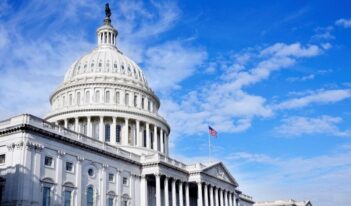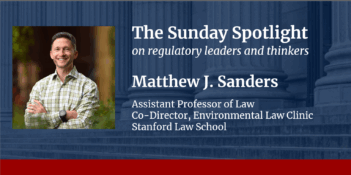
In the process of handing environmentalists a loss in AEP v. Connecticut, the Court strengthens the EPA’s authority over greenhouse gas emissions.
In American Electric Power v. Connecticut (AEP), several states, New York City, and some nonprofit land trusts had sued five major electric power companies. The plaintiffs contended that the power companies were committing a public nuisance with their unrestricted use of fossil fuels. The plaintiffs faced a multitude of legal and evidentiary hurdles. On June 20, the Supreme Court ruled against the plaintiffs 8-0. As losses go, however, it was not nearly as damaging as it could have been.
Lower court judges had divided about whether suits of this type were even within the jurisdiction of the federal courts. Some district judges said the suits were nonjusticiable “political questions,” and the defendants also argued that the injury to the plaintiffs was too diffuse, speculative, and indirect to give them standing to sue.
The Supreme Court split evenly on these issues, resulting in no opinions on the subject of jurisdiction. An even split was possible because Justice Sotomayor had considered the case as a lower court judge before joining the Supreme Court, so she did not participate at the Supreme Court level. It seems very likely, based on Justice Sotomayor’s views in other cases, that she would have found jurisdiction, so there are probably five votes in favor of jurisdiction in any future climate change case.
On the merits, the Court held that the federal common law of nuisance regarding climate change is preempted by the Clean Air Act’s grant of jurisdiction to the Environmental Protection Agency (EPA) to regulate greenhouse gases. This part of the opinion strongly reaffirmed the holding in a prior Supreme Court decision, Massachusetts v. EPA, which ruled 5-4 that the statute covers greenhouse gases.
According to the AEP opinion,
Massachusetts made plain that emissions of carbon dioxide qualify as air pollution subject to regulation under the Act. . . . And we think it equally plain that the Act “speaks directly” to emissions of carbon dioxide from the defendants’ plants.
In a concurrence, Justices Alito and Thomas said they were taking this position only for the purposes of argument because no party had contested it. Notably, Chief Justice Roberts and Justice Scalia did not join that concurrence, so there seem to be six votes (plus Sotomayor) for upholding EPA’s jurisdiction over greenhouse gases.
Overall, this is about as good an outcome as could have been hoped for after oral argument. It also makes it more complex for Congress to repeal EPA’s jurisdiction since doing so might revive the federal common law in the context of climate change.
The idea that federal statutes preempt the federal common law goes back to a case from the 1970s involving interstate water pollution. It sounds appealing to say that federal judges should not step in if Congress is already dealing with the problem.
But doing so turns out to be a somewhat pointless exercise. The Supreme Court created federal common law so that disputes involving multiple states would be governed by a neutral set of rules rather than conflicting and self-interested state laws. Eliminating the federal common law leaves only the federal statute. But the Clean Air Act provisions applying to power plants make it clear that states are free to apply their own more rigorous laws. The Supreme Court dealt with a similar problem involving the Clean Water Act by saying that a nuisance suit could still be brought in federal court so long as it applied the legal doctrines of the place where the polluter was located. Of course, that state is not likely to give equal weight to the interests of other states that are damaged by the pollution, so this is far from being an ideal solution.
As a result, it would appear that the plaintiffs in the AEP case might be able to continue with their lawsuit based on state law, which would still leave judges in a position to add their own restrictions on top of EPA’s. The Supreme Court left this question open. It would probably have been better simply to stick with the federal common law but make it clear that courts should add to the restrictions imposed by Congress only to deal with unique or unforeseen circumstances.
Whatever happens with these “nuisance” cases, the main action at this point is clearly the litigation involving EPA’s first round of greenhouse gas regulations. AEP strengthens EPA’s hand at least a bit in that litigation, while also making it more likely that environmental groups will have standing to participate.




